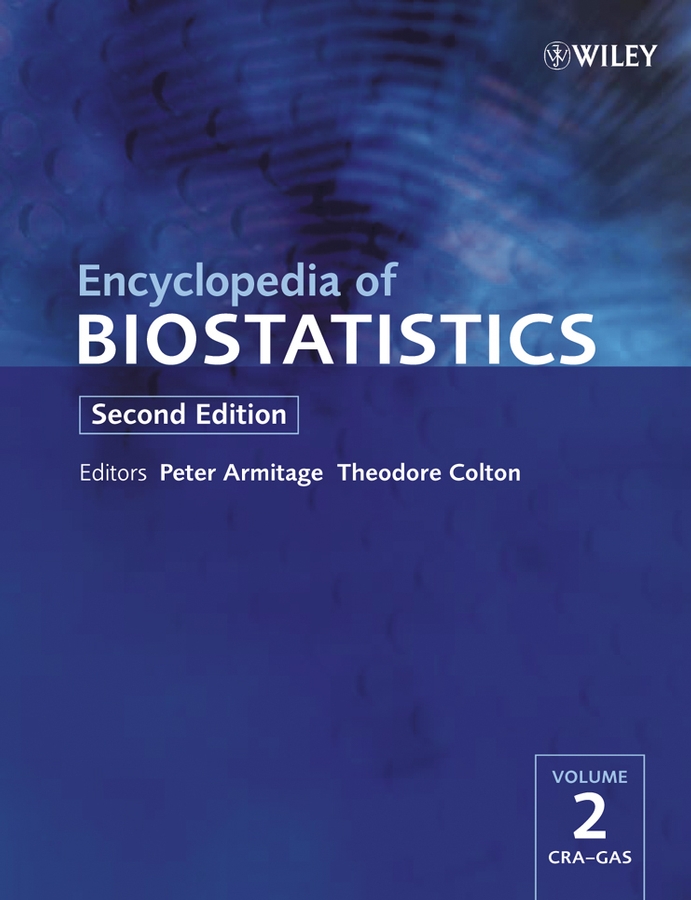Bioequivalence
1
Laszlo Endrenyi,
Laszlo Endrenyi
University of Toronto, Toronto, Ontario, Canada
Search for more papers by this authorLaszlo Endrenyi,
Laszlo Endrenyi
University of Toronto, Toronto, Ontario, Canada
Search for more papers by this authorFirst published: 15 July 2005
Abstract
Bioequivalence is defined as the comparable bioavailability of alternative drug formulations. Kinetic measures of bioavailability are reviewed, leading to a discussion of the statistical assessment of bioequivalence. Parametric and nonparametric methods of testing are described. Current research areas including the estimation of individual bioequivalence and alternative measures for the evaluation of bioequivalence are reviewed.
References
- 1 Anderson, S. (1993). Individual bioequivalence: a problem of switchability (with discussion), Biopharmaceutics Report 2(2), 1–11.
- 2 Anderson, S. & Hauck, W. W. (1990). Considerations of individual bioequivalence, Journal of Pharmacokinetics and Biopharmaceutics 18, 259–273.
- 3
Cartwright, A. C.,
Gundert-Remy, U.,
Rauws, G.,
McGilveray, I.,
Salmonson, T. &
Walters, S.
(1991).
International harmonization and consensus DIA meeting on bioavailability and bioequivalence testing requirements and standards,
Drug Information Journal
25,
471–482.
10.1177/009286159102500402 Google Scholar
- 4 Chen, M. L. (1992). An alternative approach for assessment of rate of absorption in bioequivalence studies, Pharmaceutical Research 9, 1380–1385.
- 5 Chow, S. C. & Liu, J. P. (1992). Design and Analysis of Bioavailability and Bioequivalence Studies. Marcel Dekker, New York.
- 6 Endrenyi, L. & Al-Shaikh, P. (1995). Sensitive and specific determination of the equivalence of absorption rates, Pharmaceutical Research 12, 1856–1864.
- 7 Endrenyi, L., Fritsch, S. & Yan, W. (1991). Cmax/AUC is a clearer measure than Cmax for absorption rates in investigations of bioequivalence, International Journal of Clinical Pharmacology, Therapeutics and Toxicology 29, 394–399.
- 8 Hauschke, D., Steinijans, V. W. & Diletti, E. (1990). A distribution-free procedure for the statistical analysis of bioequivalence studies, International Journal of Clinical Pharmacology, Therapeutics and Toxicology 28, 72–78.
- 9 Holder, D. J. & Hsuan, F. (1993). Moment-based criteria for determining bioequivalence, Biometrika 80, 835–846.
- 10 Sauter, R., Steinijans, V. W., Diletti, E., Böhm, A. & Schulz, H. -U. (1992). Presentation of results from bioequivalence studies, International Journal of Clinical Pharmacology, Therapeutics and Toxicology 30, 233–256.
- 11 Schall, R. (1995). Assessment of individual and population bioequivalence using the probability that bioavailabilities are similar, Biometrics 51, 615–626.
- 12 Schall, R. (1995). Unified view of individual, population and average bioequivalence, in BioInternational 2: Bioavailability, Bioequivalence and Pharmacokinetic Studies, H. H. Blume & K. K. Midha, eds. Medpharm, Stuttgart, pp. 91–106.
- 13 Schall, R. & Luus, H. E. (1993). On population and individual bioequivalence, Statistics in Medicine 12, 1109–1124.
- 14 Schuirmann, D. J. (1987). A comparison of the two one-sided tests procedure and the power approach for assessing the equivalence of average bioavailability, Journal of Pharmacokinetics and Biopharmaceutics 15, 657–680.
- 15 Sheiner, L. B. (1992). Bioequivalence revisited, Statistics in Medicine 11, 1777–1788.
- 16 Steinijans, V. W. & Hauschke, D. (1990). Update on the statistical analysis of bioequivalence studies, International Journal of Clinical Pharmacology, Therapeutics and Toxicology 28, 105–110.
- 17 Steinijans, V. W., Sauter, R., Jonkman, J. H. G., Schulz, H. U., Stricker, H. & Blume, H. (1989). Bioequivalence studies: single vs multiple doses, International Journal of Clinical Pharmacology, Therapeutics and Toxicology 27, 261–266.
- 18 Westlake, W. J. (1981). Bioequivalence testing—a need to rethink, Biometrics 37, 589–594.
- 19 Westlake, W. J. (1988). Bioavailability and bioequivalence of pharmaceutical formulations, in Biopharmaceutical Statistics for Drug Development, K. E. Peace, ed. Marcel Dekker, New York, pp. 329–352.
- 20 Yee, K. F. (1986). The calculation of probabilities in rejecting bioequivalence, Biometrics 42, 961–965.
- 21 Zha, J. & Endrenyi, L. (1997). Variation of the peak concentration following single and repeated drug administrations in investigations of bioavailability and bioequivalence, Journal of Biopharmaceutical Statistics 7, 191–204.



